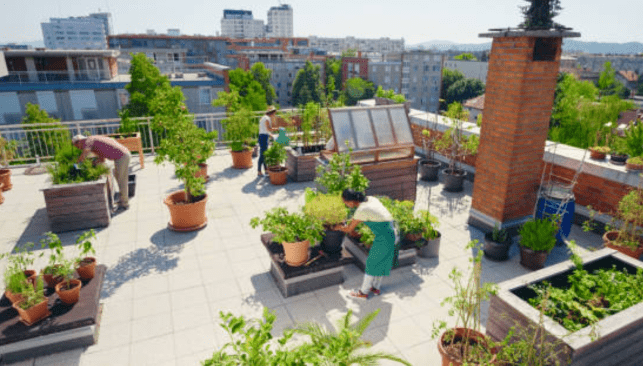
Key Takeaways:
- Discover practical strategies for initiating an urban garden in limited spaces.
- Learn the ideal plant selections tailored to urban conditions and how to care for them.
- Find out innovative gardening techniques that maximize space efficiency.
- Gain insights into the importance of proper soil management and composting.
- Understand watering systems and maintenance routines for healthy city gardens.
- Explore natural solutions to common urban gardening challenges, including pests.
- Realize the benefits of harvesting and connecting with fellow urban gardening enthusiasts.
- Appreciate how urban gardening positively impacts environmental sustainability.
Table of Contents:
- Introduction
- Understanding the Basics of Urban Gardening
- Choosing the Right Plants for Your Urban Garden
- Maximizing Limited Space
- Soil and Composting in an Urban Setting
- Watering and Maintenance
- Battling Pests and Problems
- Harvesting Your Urban Bounty
- Connecting With Local Urban Gardening Communities
- Urban Gardens and Sustainability
Introduction
Urban landscapes are bustling with life, yet green spaces can be few and far between. However, the rise of urban gardening has marked a transformative shift, making it possible to enjoy nature even in the city’s heart. Whether you have a small balcony, a rooftop, or a shared community space, you can cultivate a lush green environment that is pleasing to the senses but contributes significantly to local ecology and personal well-being. Initiating your gardening endeavor can be a thrilling venture, and thanks to resources where one can find cheap gardening supplies, it’s more accessible than ever.
Understanding the Basics of Urban Gardening
Embarking on an urban gardening project begins with understanding what makes these green spaces thrive in an urban context. You’ll need to consider the specifics of your area, including how much direct sunlight it receives, the local climate, and the air quality. With careful planning and strategic design, even the most limited and unlikely spaces can blossom into vibrant gardening hotspots. The key is to align your aspirations with the practicalities of urban life, creating a balance between beauty and functionality.
Choosing the Right Plants for Your Urban Garden
Plant selection is critical in the establishment of a thriving urban garden. Only some plant species are well-suited for the urban environment, and selecting plants that can thrive in potentially harsh conditions is essential. Hardy plants that can withstand varying levels of sunlight, temperature fluctuations, and occasional neglect are ideal candidates for the urban gardener. Leafy greens, aromatic herbs, and flowering perennials that adapt well to container living are excellent choices. Their resilience and low-maintenance requirements will reward you with a bountiful and beautiful garden that’s also a testament to your green thumb.
Maximizing Limited Space
The art of maximizing space is a critical component of urban gardening. Innovative methods such as vertical gardening allow gardeners to expand upwards rather than outwards. Utilizing items like hanging pots, vertical wall planters, or even stacked crates can dramatically increase your gardening space, opening up a world of possibilities. Container gardening offers the flexibility to move plants around and adjust based on sunlight and seasonal changes. By employing a bit of ingenuity, even the most cramped urban abode can become a lush, plant-filled sanctuary.
Soil and Composting in an Urban Setting
Even if your garden is set atop a concrete jungle, the vitality of your plants hinges on the quality of the soil. Achieving nutrient-rich soil in an urban setting may seem daunting, but it’s feasible with the correct techniques. Composting household organic waste reduces landfill contributions and provides a steady supply of nutrient-dense material for your garden. Today’s compost systems are designed to fit into small spaces and be odor-free, ensuring that your composting efforts are practical and neighbor-friendly.
Watering and Maintenance
Consistent care is essential for the well-being of your urban garden. While hand-watering is an option, drip irrigation systems offer a more consistent and time-saving solution. Mulch can be an excellent ally in maintaining soil moisture while preventing the growth of weeds. Regular garden maintenance, including deadheading flowers, pruning overgrowth, and using a weed whacker to control your lawn and weeds, helps to keep your garden tidy and encourages plant growth. Keeping a close eye on your garden’s condition and adjusting your care regimen will lead to a thriving urban green space.
Battling Pests and Problems
Urban gardens are not immune to pests and other challenges that can compromise plant health. Addressing these issues promptly and effectively is crucial. Organic pest control methods such as introducing beneficial insects or using environmentally friendly sprays can protect your plants without harming the broader ecosystem. Moreover, selecting plant varieties resistant to local pests and diseases can prevent many common gardening problems from arising.
Harvesting Your Urban Bounty
The joy of harvesting home-grown produce or flowers is a unique reward for the urban gardener. Learning the proper techniques for harvesting—when to pick, how to cut, and the best times of the day—ensures that your plants will continue to produce. Keeping an organized record of planting and harvest dates can also help plan for continuous yields, enabling you to enjoy the fruits of your labor throughout the growing season.
Connecting With Local Urban Gardening Communities
Urban gardening is as much about cultivating plants as it is about nurturing community ties. Connecting with local gardening groups through social media, garden clubs, or neighborhood initiatives opens doors to shared experiences and wisdom. These groups can offer support, advice, and camaraderie, enriching the urban gardening experience and fostering a sense of belonging among green-thumbed city dwellers.
Urban Gardens and Sustainability
Urban gardens can contribute significantly to the sustainability of city environments. Beyond providing aesthetic and individual well-being, these gardens reduce urban heat island effects, enhance local biodiversity, and promote ecological education among city populations. Every plant added to an urban garden is a small step toward a larger goal of creating greener, more sustainable urban landscapes for future generations to enjoy.



